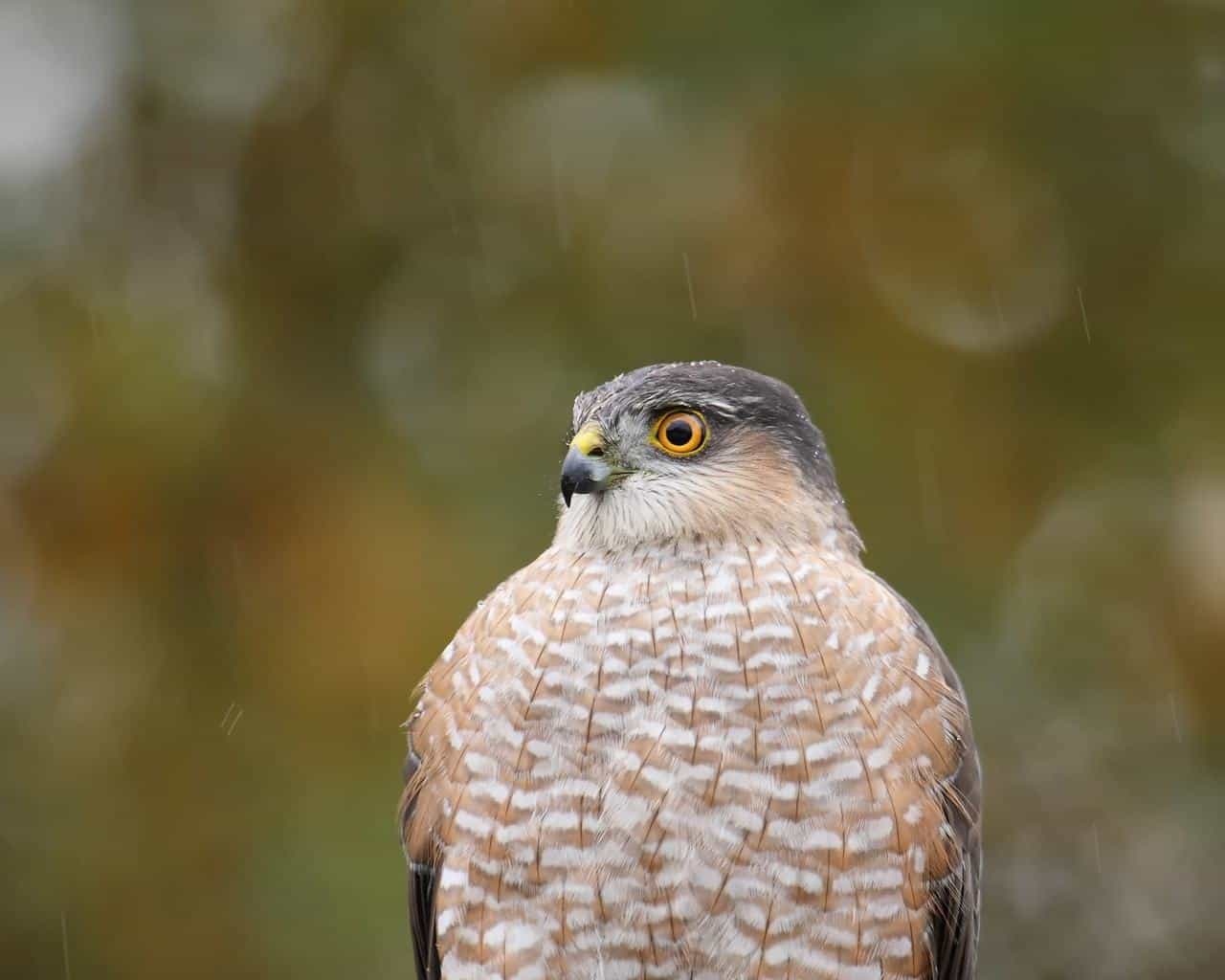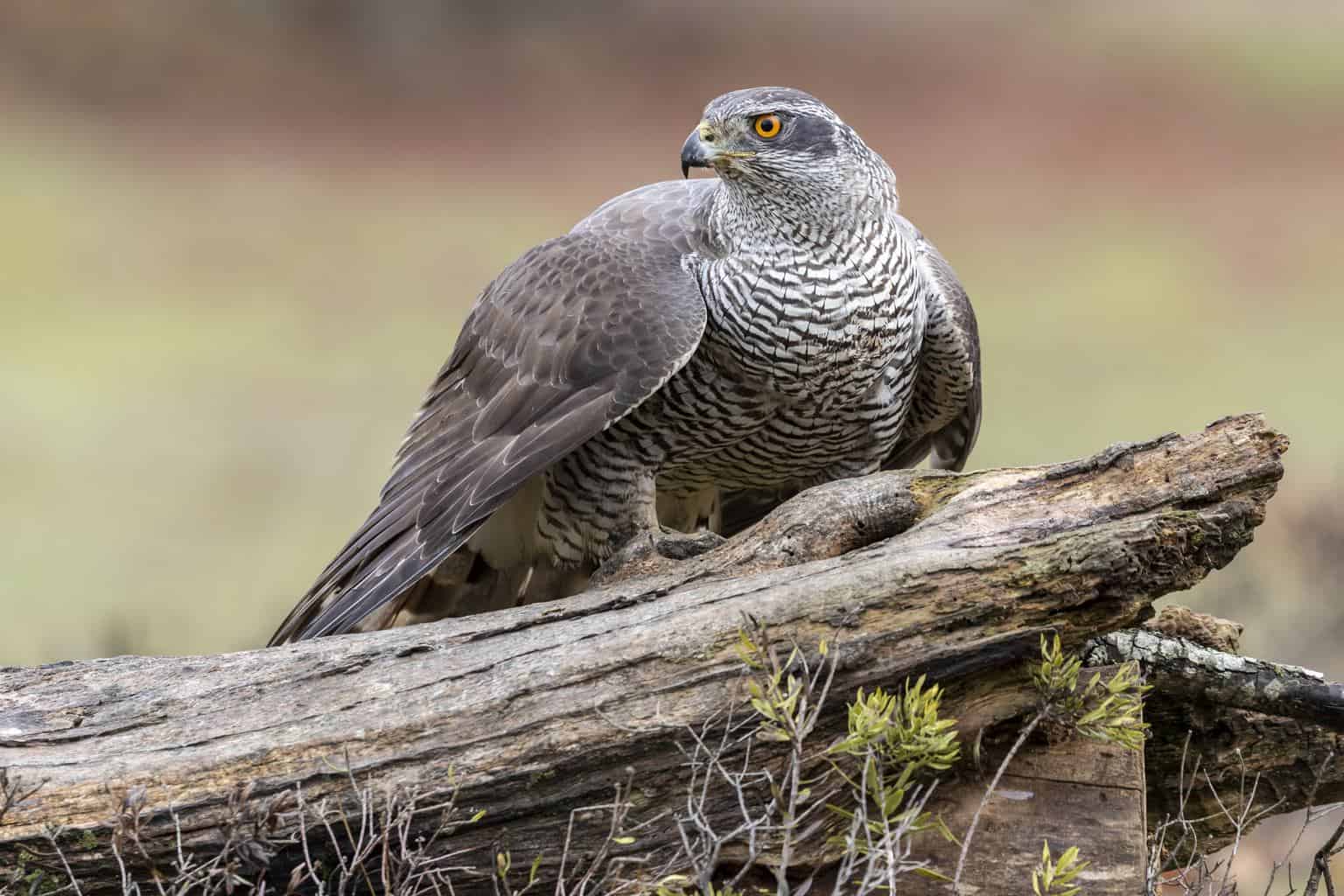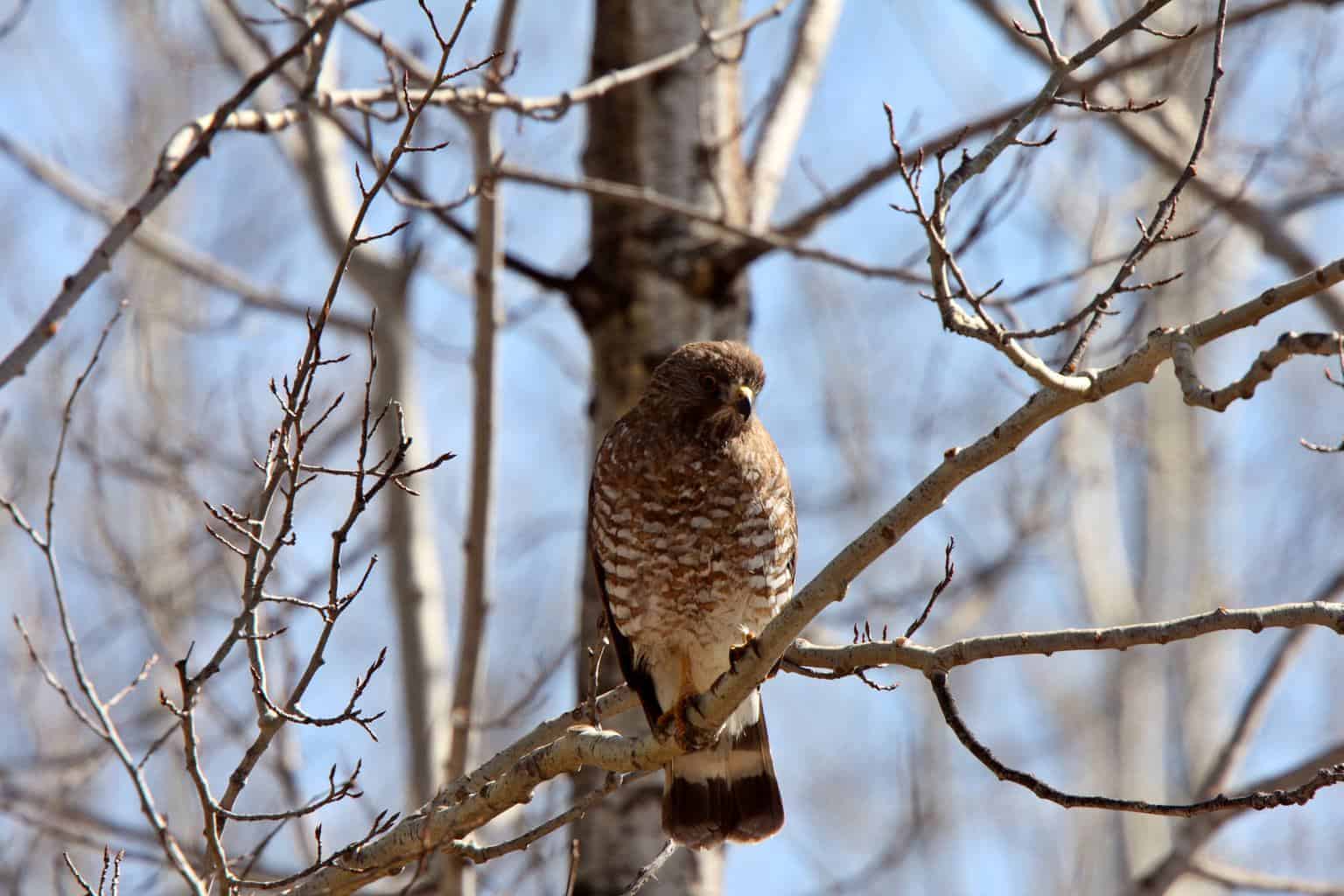Sunny days are for exploring the formerly-nicknamed Sunshine State, and luckily for our more adventurous readers, South Dakota has no shortage of outdoor sights to see.
There’s the Black Hills National Forest, the Crazy Horse Memorial, Wind Cave National Park, and of course — the sight that really puts South Dakota on the map and gave it a new nickname — Mount Rushmore. In attractions like this, you’ll see more than just hiking boot-clad tourists with binoculars and cameras in hand; there will be plenty of wildlife, too…including our feathered-friends who fly among the clouds.
As of October 2020, 438 species of birds were included in the state’s Ornithologists’ Union (SDOU) official list. And though we appreciate and admire each species, in this article, we’re narrowing our focus to one brilliant and intelligent bird of prey: the hawk.
Nine species of hawks call the Mount Rushmore State home, and we’re going to highlight each of them. Keep reading to learn all about these beautiful birds!
Sharp-Shinned Hawk

- Scientific Name: Accipiter striatus
- Length: 9.4 – 13.4 inches
- Weight: 3.1 – 7.7 ounces
- Wingspan: 16.9 – 22.1 inches
Sharp-shinned hawks are on the smaller side of the spectrum. In fact, they’re the smallest species of hawks in the United States and Canada. Adult sharp-shinned hawks have slaty blue-gray top feathers and narrow, horizontal reddish-orange streaks on their chests. Immature sharpies, however, are brown with vertical bands on their white underparts.
These birds of prey have long, square-tipped tails and short, rounded wings, and they can be found in large stands of deciduous, coniferous, and mixed pine-hardwood forests. You may even spot them in pine plantations.
These swift fliers are known for their “flap-flap-guide” flight style as they soar over open spaces, and when they encounter their prey — usually small birds, rodents, amphibians, or large insects — they use their speed to sneak up on them or pounce from lower perches to attack them on the ground.
Cooper’s Hawk

- Scientific Name: Accipiter cooperii
- Length: 14.6 – 15.3 inches (males), 16.5 – 17.7 inches (females)
- Weight: 7.8 – 14.5 ounces (males), 11.6-24.0 ounces (females)
- Wingspan: 24.4 – 35.4 inches (males), 29.5 – 35.4 inches (females)
Cooper’s hawk is a medium-sized hawk with broad, rounded wings and a very long tail. Though it’s bigger than a sharp-shinned hawk, their very similar coloring is often enough to mistake one species for the other.
Much like their smaller lookalikes, adult Cooper’s hawks have steely blue-gray top feathers, warm reddish streaks on their chests and bellies as well as thick dark bands on their tails. Juvenile hawks are brown on top with brown banding on the upper breast.
When they’re in flight among trees, you’ll notice that Cooper’s hawks soar with a “flap-flap-glide” pattern. They live in wooded habitats from deep forests to leafy subdivisions and backyards. When they’re on the hunt for food, they’ll likely look for smaller birds and animals like chipmunks, ground squirrels, mice, and bats. If they’re particularly desperate for a meal, Cooper’s hawks will help themselves to reptiles and insects, too.
Northern Goshawk

- Scientific Name: Accipiter gentilis
- Length: 20.9 – 25.2 inches
- Weight: 22.3 – 48.1 ounces
- Wingspan: 40.5 – 46.1 inches
Northern goshawks aren’t just large hawks; they’re the largest of the accipiters. Females can get as big as a red-tailed hawk while males are just a bit larger than a female Cooper’s hawk. These big birds get their names from the Old English word for “goose hawk,” which refers to their tendency to prey on other birds.
These accipiters show off broad, rounded wings and long tails. They have dark slate gray top feathers with pale gray barred underparts, and their heads are dark with a wide white stripe above the eye.
You’re most likely to find northern goshawks in forests full of coniferous wood, but they may also reside in deciduous hardwood forests. If you hope to see one of these swift and stealthy birds, consider planning your trip to South Dakota during the winter months.
Red-Shouldered Hawk

- Scientific Name: Buteo lineatus
- Length: 16.9 – 24.0 inches
- Weight: 17.1 – 27.3 ounces
- Wingspan: 37.0 – 43.7 inches
Much smaller than a red-tailed hawk but bigger than a broad-winged hawk, birds of the red-shouldered hawk species are medium-sized with broad, rounded wings and medium-length tails. They adopt a distinctive “reaching” posture in flight.
Adults are colorful with dark-and-white checkered wing feathers, reddish barring on their chests, and black tails that are embellished with narrow white bands.
A birdwatcher will probably hear the red-shouldered hawk before they see it, as it produces a distinctive whistled kee-rah sound. Listen closely as you trek through their preferred habitats, which include deciduous woodlands — often those that are near water, like rivers and swamps.
Broad-Winged Hawk

- Scientific Name: Buteo platypterus
- Length: 13.4 – 17.3 inches
- Weight: 9.3 – 19.8 ounces
- Wingspan: 31.9 – 39.4 inches
Meet the broad-winged hawks — small raptors with stout bodies, large heads, and short squared tails. Their heads are marked with reddish-brown feathers and tails with broad black and white streaks. Juvenile broad-wings are a lighter shade of brown, and their underparts are streaked.
They spend most of their time underneath deciduous or mixed coniferous-deciduous forest canopies where they hunt for smaller birds and small mammals, amphibians, and large insects on the ground. Depending on what region of the United States the bird is in and the season of the year, it also feeds on fish and crayfish.
Broad-winged hawks’ call is a piercing whistle on a single pitch.
Swainson’s Hawk

- Scientific Name: Buteo swainsoni
- Length: 18.9 – 22.1 inches
- Weight: 24.4 – 48.2 ounces
- Wingspan: 46 – 54 inches
Next on our list of hawks in South Dakota is Swainson’s hawk. Named after British naturalist William Swainson, the buteo birds of prey are bigger than the Cooper’s hawk species and have broad wings and short tails.
Swainson’s hawks vary in appearance, but most of them have light bellies with dark or reddish-brown breasts and brown or gray upperparts. While most males of this species are gray-headed, females are instead topped with brown feathers. The underwings of both sexes have distinctive white linings that contrast strongly with their blackish flight feathers.
This bird eats ground squirrels, pocket gophers, snakes, and lizards during the summer and primarily feeds on insects at other times of the year.
Red-Tailed Hawk

- Scientific Name: Buteo jamaicensis
- Length: 17.7 – 22.1 inches (males), 19.7 – 25.6 inches (females)
- Weight: 24.3 – 45.9 ounces (males), 31.8 – 51.5 ounces (females)
- Wingspan: 44.9 – 52.4 inches
Coming in second only to the ferruginous hawk, red-tailed hawks are among the largest buteo hawks in North America. You’re most likely to find them in open areas with scattered elevated perches, as well as atop telephone poles and trees along roadsides.
Most red-tailed hawks have rich brown tops and pale underparts with a streaked belly. Their signature tails are cinnamon-red in adults but brown in immature birds.
Members of the red-tailed hawk family are among the most commonly spotted across the United States, so whether you’re in the car on the highway for a long drive or on a hike through one of South Dakota’s many trails, your chances of spotting this open country-loving bird while its perched or in flight are pretty high.
Rough-Legged Hawk

- Scientific Name: Buteo lagopus
- Length: 18.5 – 20.5 inches
- Weight: 25.2 – 49.4 ounces
- Wingspan: 52.0 – 54.3 inches
Though not the biggest of the birds of prey, rough-legged hawks are still fairly large hawks with broad, long wings. Their tails are longer than other buteos, and their wingtips are often slightly swept back from their wrists to form an M-shape.
These dark brown hawks have boldly patterned feathers and occur in both light and dark morphs. Light morphs have pale underwings with dark patches, while dark morphs are mostly a shade of deep, chocolatey brown.
The rough-legged hawk gets its name from the feathers that run down its legs to its feet. This is so the birds stay warm in their arctic breeding grounds until they can head south to cooler weather. They’re one of only three North American raptors to boast this physical trait, including the golden eagle and the ferruginous hawk.
Ferruginous Hawk

- Scientific Name: Buteo regalis
- Length: 22.1 – 27.2 inches
- Weight: 34.5 – 73.2 ounces
- Wingspan: 52.4 – 55.9 inches
And speaking of the ferruginous hawk…it can be found in South Dakota, too! The largest buteo hawk in North America, birds of the ferruginous hawk species have large heads and relatively long wings.
Like many other hawks, these birds can be seen in two different color morphs. Light morph ferruginous hawks have strikingly white underparts and rusty legs that display a V-shape when the bird is soaring. The rarer dark-morph is mostly a deep rufous-chocolate.
Ferruginous hawks live in open spaces including grasslands, prairie, sagebrush steppe, scrubland, and pinyon-juniper woodland edges. They hunt on the ground and often turn into the wind and hover, or kite, in place while looking for a small to medium-sized bird to make its next meal.
Wrap Up
As you can tell, there’s no shortage of fascinating hawks to be found in South Dakota. Be sure to add this state to your list of birdwatching destinations; you definitely won’t be disappointed by what it has to offer.

